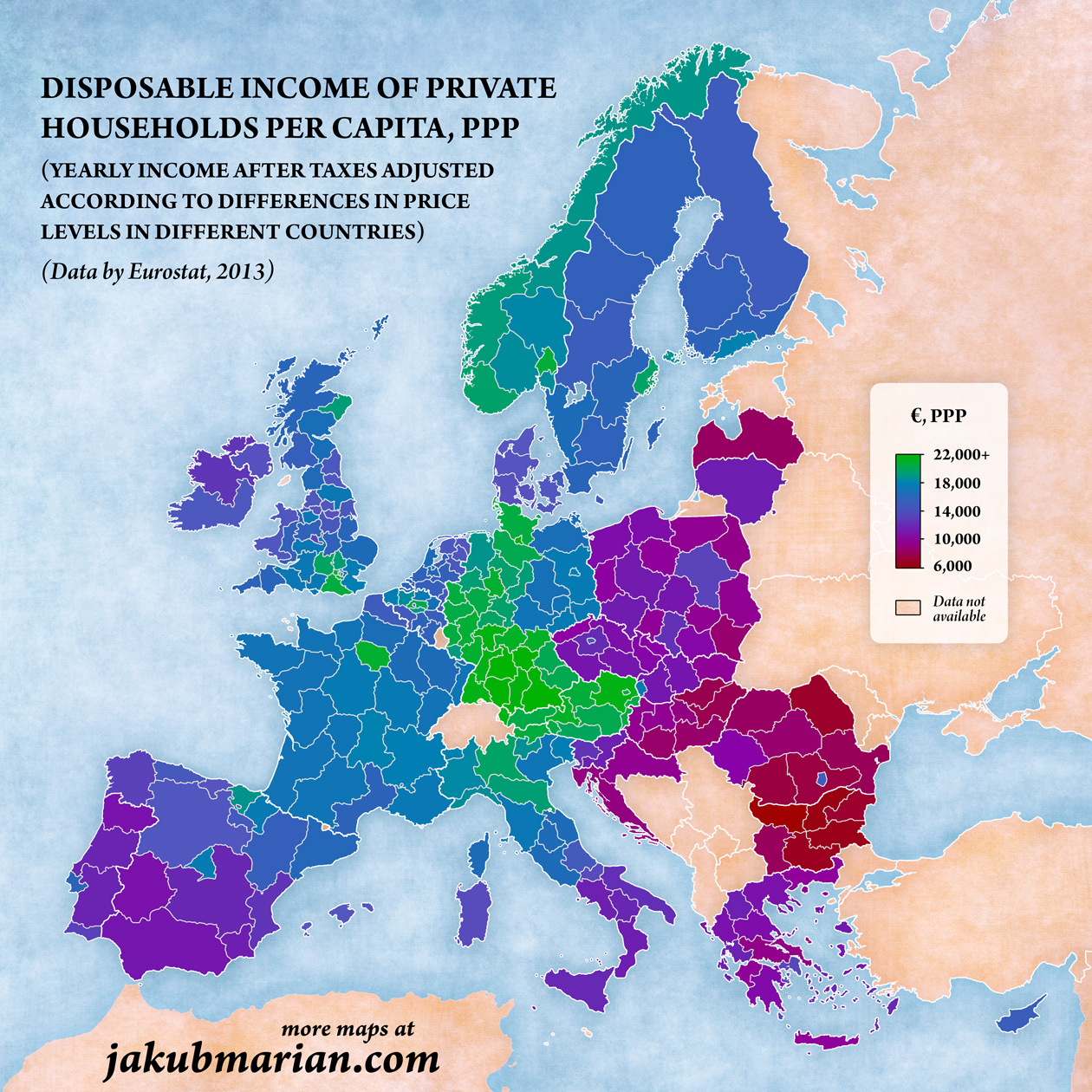Disposable income is defined as income (from employment, business, property, or social security) minus taxes and social security contributions paid per year. In other words, it is the real amount of money a person has available for spending for goods and services (including basic needs, such as food and rent).
However, comparing average income between different countries can be misleading since the same thing costs different amounts of money in different places. Eurostat takes that into account and defines an artificial currency called PPS, which is essentially the euro adjusted according to price levels (purchasing power parity) in different countries.
The following map, based on the most recent available data by Eurostat (2013), shows the average yearly income of inhabitants of NUTS 2 regions in Europe in PPS (simply put, the greener the colour, the more the inhabitants of the given region can buy):

 Tip: Are you a non-native English speaker? I have just finished creating a
Tip: Are you a non-native English speaker? I have just finished creating a  Web App
Web App
